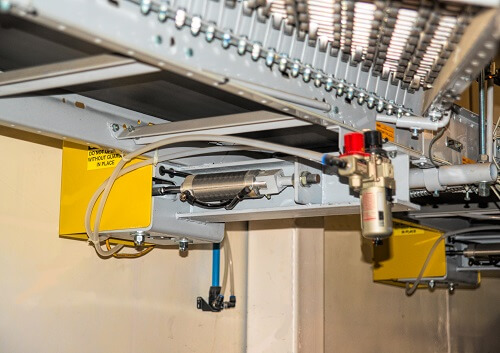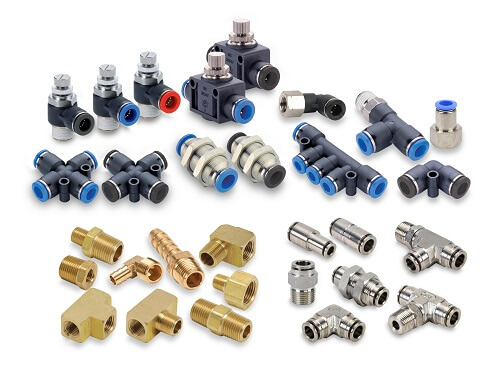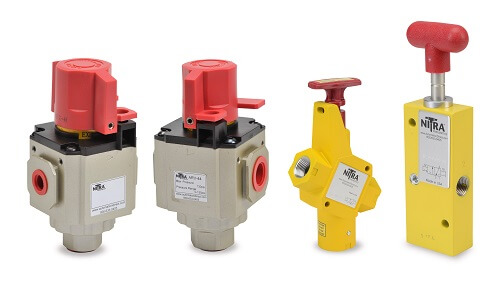Planning the details and remembering the small stuff pays off when designing a pneumatic system.
Kevin Kakascik, Technical Marketing Engineer at AutomationDirect, wrote an article for the January 2020 issue of Design World titled How to Build a Pneumatics Bill of Material. Here’s a summary, click on the link above for the full text.
Maybe you’ve planned a home project, went to the hardware store for materials, and rolled up your sleeves to start work on a Saturday morning—only to find you were missing some small items like screws. How could you forget these small yet crucial components for your project? It’s simple—because they are small, they often take a lower priority to the larger items.

The same thing can happen for larger industrial projects, where having all the parts on hand makes the difference between quickly completing a project, or delaying the work and incurring additional costs. This article shows how to address this issue by examining often overlooked pneumatic components when creating a pneumatic system bill of materials (BOM).
Tubing
Most pneumatic systems use some amount of flexible tubing for transporting compressed gas. Tubing is available in many sizes, colors, and environmental ratings—complicating stocking of all the necessary types. To prevent running short, it pays to standardize where possible, over-order, and work with a supplier offering a complete product selection.
Fittings
Fittings connect tubing to devices and other sections of tubing. Careful planning is required to specify the correct sizes, threading, and materials of construction.

Manifolds
Pneumatic manifolds are a space-saving way to distribute compressed gas to multiple devices. They are not required but can make for a compact installation that’s easier to maintain.
Manual Shutoff and Isolation/Lockout Valves
Manual shutoff valves are safety disconnect devices for isolating downstream equipment from air pressure. Manual isolation/lockout valves are similar, except they also bleed off downstream pressure.
Valves are necessary to properly supply, isolate, and de-pressurize pneumatic systems. They must be arranged so equipment can be locked out by maintenance personnel, who can then safely perform work without fear of equipment moving pneumatically.
OSHA standards require proper incorporation of these safety devices, so the proper valves must be on hand for an installation.

Automatic Soft Start Valves
Some pneumatic equipment may not be required but is a good design practice. This is the case with automatic soft start solenoid valves, which quickly relieve downstream pressure when de-energized and gradually ramp up the pressure when energized, extending equipment life by preventing sudden movement.
Exhaust Mufflers
Exhaust mufflers are among the smallest, simplest, and least expensive pneumatic components, used to reduce noise and provide a safer working environment.
Specialty Fittings
The term “specialty fittings” is a catchall for items like flow restrictors, check valves, shuttle valves, and manual bleeder valves. Because they may not regularly be used, they can be overlooked during the design. Some of these items can be hard to source locally, so it is important to order them in advance.
Sweat the Small Stuff
The smaller and sometimes-forgotten components described in this article usually don’t cost a lot, but they may not be readily available from the corner hardware store. Careful planning, BOM development, and ordering will ensure these components are on hand, keeping pneumatics projects on track.

